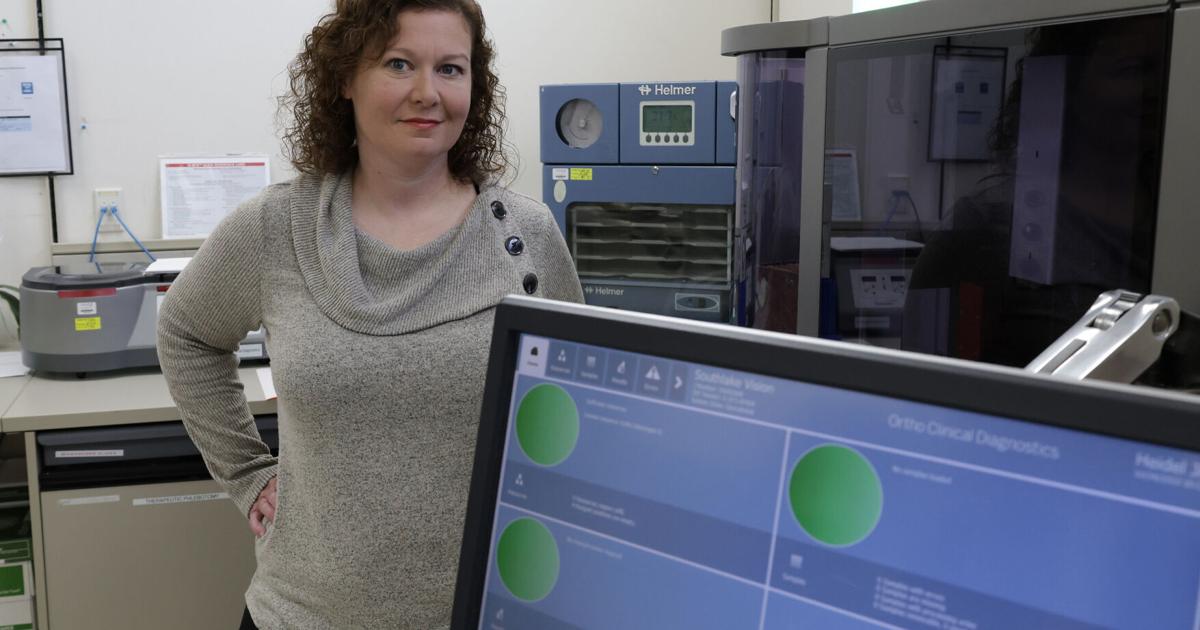Blood
Get Healthy: How to keep blood donations coming during the critical holiday season
Typically a season of giving, the holidays see blood donations drop by approximately 25%.
“That’s a significant number particularly because demand generally increases during that time,” says Kristin Paltzer, public relations manager at Versiti, a company that provides blood products to hospitals, medical centers and blood centers throughout Northwest Indiana.
The demand for blood is higher at the end of the year because there are more surgeries then as well, says Dr. John Feczko, medical director of the laboratory at Northwest Health-Porter.
During winter weather, accidents that require blood transfusions are more common. One in seven patients entering a hospital requires blood products, according to Versiti of Michigan’s website: 25% of blood donations aid cancer patients and 1 in 83 baby deliveries require blood transfusions, an increase of more than 50% from 2006 and 2015.
People are also reading…
“The reason donations are so important is that there simply is no other way to provide these patients with the blood they need to survive,” says Jill Heidel, blood bank supervisor for Methodist Hospitals.
Paltzer says that Versiti always tries to maintain a three to five day supply.
“When we drop below that and have just two days to less than a day, it becomes a very critical emergency situation,” she continues. “That can happen when we just don’t have people donating or it could happen if a patient has a severe car accident and needs a lot of blood. When that happens it’s called a mass transfusion protocol, calling for a rapid administration of large amounts of blood products. That negatively impacts the supply.”
The reasons for drops in donations around this time of year are varied.
“Blood supplies generally run short during the holiday season, typically due to all of the holiday-related activities and poor weather during that time of year,” says Heidel. “It’s just harder for people to find the time or to be able to get out to go donate. There is also more illness going around in the winter and that can keep people from donating as well.”
Paltzer notes that many high school and college students give blood and aren’t necessarily focused on donating during winter break.
But other factors affect blood supply. Because blood is perishable, it can’t be stockpiled beyond a certain time period.
According to Paltzer, red blood cells can be stored for 42 days before they expire. After that they must be destroyed. Plasma can be frozen for up to 12 months, while platelets must be transfused within five days of being collected. Before being used, all donated blood products must undergo a series of tests to ensure they are safe for patients to receive. Typically it takes about 24 to 48 hours for the blood to be available after a donation.
Donating blood is a fairly simple process.
“There are many donation centers that operate year-round as well as blood drives that are held in convenient locations such as schools, hospitals and places of business,” says Heidel, noting that appointments can be scheduled at a donor’s convenience and that the entire process takes only about an hour.
“We always recommend that donors get a good night’s sleep, eat a good meal and they are well hydrated before donating,” says Paltzer. “Afterwards they should drink lots of water. We have little canteen areas filled with snacks like cookies and chips and beverages for right after donating. We also recommend keeping it simple for the rest of the day. Don’t plan on going out and running a marathon. But for the most part, except for some who might feel a little lightheaded, people are fine.”
Some donors have given hundreds of gallons of blood.
“We are really lucky because we have a really loyal donor base,” says Paltzer, who adds that 50% of first-time donors don’t return.
All blood types are needed but types O-positive and O-negative are most in demand. O-positive is the most common blood type, and O-negative is the universal blood type that can be administered to all patients in emergencies when their blood type is unknown.
“People should consider donating not only blood but platelets and plasma,” says Feczko.
Even if someone is unable to donate because of low weight or other medical conditions, there are other ways to help.
“People can help organize a blood drive, volunteer their time, give someone a ride to a donation center, join the organ and tissue donor registry or make a financial contribution,” says Heidel.
Donating one pint of blood can save up to three lives.
“No other product exists that can do all of the things that our blood does,” says Heidel.
#lee-rev-content { margin:0 -5px; }
#lee-rev-content h3 {
font-family: inherit!important;
font-weight: 700!important;
border-left: 8px solid var(–lee-blox-link-color);
text-indent: 7px;
font-size: 24px!important;
line-height: 24px;
}
#lee-rev-content .rc-provider {
font-family: inherit!important;
}
#lee-rev-content h4 {
line-height: 24px!important;
font-family: “serif-ds”,Times,”Times New Roman”,serif!important;
margin-top: 10px!important;
}
@media (max-width: 991px) {
#lee-rev-content h3 {
font-size: 18px!important;
line-height: 18px;
}
}
#pu-email-form-breaking-email-article {
clear: both;
background-color: #fff;
color: #222;
background-position: bottom;
background-repeat: no-repeat;
padding: 15px 0 20px;
margin-bottom: 40px;
border-top: 4px solid rgba(0,0,0,.8);
border-bottom: 1px solid rgba(0,0,0,.2);
display: none;
}
#pu-email-form-breaking-email-article,
#pu-email-form-breaking-email-article p {
font-family: -apple-system, BlinkMacSystemFont, “Segoe UI”, Helvetica, Arial, sans-serif, “Apple Color Emoji”, “Segoe UI Emoji”, “Segoe UI Symbol”;
}
#pu-email-form-breaking-email-article h2 {
font-size: 24px;
margin: 15px 0 5px 0;
font-family: “serif-ds”, Times, “Times New Roman”, serif;
}
#pu-email-form-breaking-email-article .lead {
margin-bottom: 5px;
}
#pu-email-form-breaking-email-article .email-desc {
font-size: 16px;
line-height: 20px;
margin-bottom: 5px;
opacity: 0.7;
}
#pu-email-form-breaking-email-article form {
padding: 10px 30px 5px 30px;
}
#pu-email-form-breaking-email-article .disclaimer {
opacity: 0.5;
margin-bottom: 0;
line-height: 100%;
}
#pu-email-form-breaking-email-article .disclaimer a {
color: #222;
text-decoration: underline;
}
#pu-email-form-breaking-email-article .email-hammer {
border-bottom: 3px solid #222;
opacity: .5;
display: inline-block;
padding: 0 10px 5px 10px;
margin-bottom: -5px;
font-size: 16px;
}
@media (max-width: 991px) {
#pu-email-form-breaking-email-article form {
padding: 10px 0 5px 0;
}
}
.grecaptcha-badge { visibility: hidden; }

